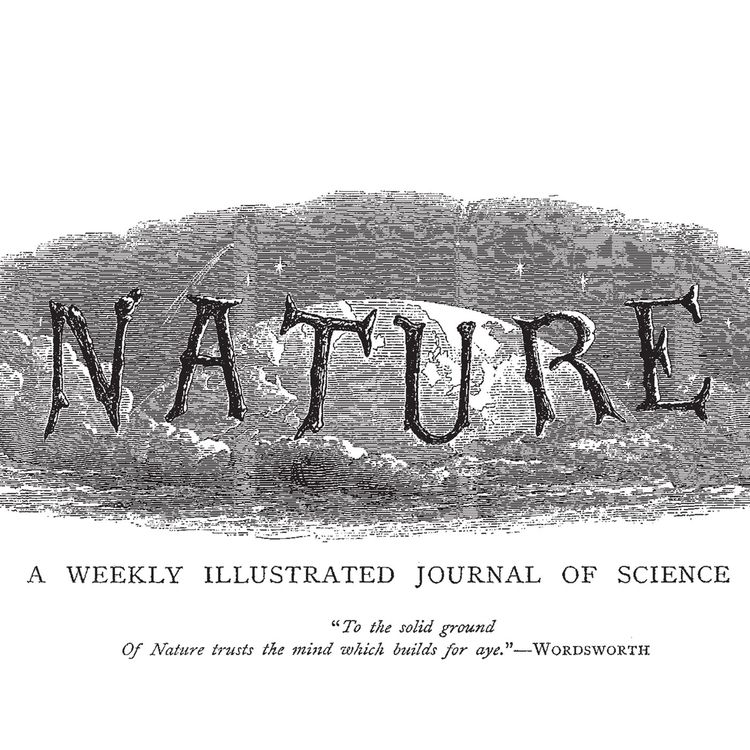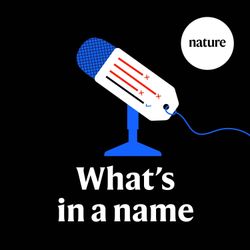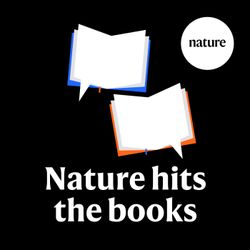Share

Nature Podcast
Nature PastCast, June 1876: Gorillas, man-eating monsters?
•
This year, Nature celebrates its 150th birthday. To mark this anniversary we’re rebroadcasting episodes from our PastCast series, highlighting key moments in the history of science.
According to the fables of early explorers, the gorilla was a terrible, man-eating monster. It was also thought to be man’s closest relative in the animal kingdom. Naturally, scientists and the public alike wanted to see these fierce beasts for themselves. But in the mid-nineteenth century, as the evolution debate heated up, getting a live gorilla to Europe from Africa was extremely difficult. In 1876, the pages of Nature report the arrival in England of a young specimen.
This episode was first broadcast in June 2013.
More episodes
View all episodes

Audio long read: Do smartphones and social media really harm teens’ mental health?
17:33|Research shows that, over the past two decades, rates of mental illness have been increasing in adolescents in many countries. While some scientists point to soaring use of smartphones and social media as a key driver for this trend, others say the evidence does not show a large effect of these technologies on teenagers’ psychological health.At the heart of the dispute is a large, complex and often conflicting body of research that different researchers interpret in different ways. This has left parents unsure what to do.This is an audio version of our Feature: Do smartphones and social media really harm teens’ mental health?
A brand-new colour created by lasers, a pig-liver transplant trial gets the green light, and a nugget-sized chunk of lab-grown meat
20:27|00:27 Five people see ‘olo’, a brand-new colourUsing a laser system to activate specific eye cells, a team has allowed five study participants to perceive a vibrant blue-greenish hue well outside the natural range of colours seen by humans. Although the setup required to accomplish this feat is currently complicated, this finding could provide more understanding about how the brain perceives colour and could one day help boost the vision of people with colour blindness.Nature News: Brand-new colour created by tricking human eyes with laser08:30 US regulator greenlights pig-liver transplant trialThe US Food and Drug Administration has approved the first trial to test whether genetically modified pig livers can be used safely to treat people with organ failure. In the initial phase of the trial, four people with severe liver failure will be temporarily connected to an external pig liver that will filter their blood. Participants will then be monitored for a year for safety and changes in liver function. The organs have been genetically modified to make them more compatible with humans.Nature News: Pig livers for people: US regulator greenlights first safety trial14:08: A chunk of lab-grown chickenUsing a designer ‘circulatory system’, a team of researchers have created what they think is the largest piece of meat grown in the laboratory yet. One of the challenges to producing larger pieces of lab-grown meat has been providing cells with sufficient oxygen and nutrients, something the team’s new setup helps overcome. They used it to grow a chunk of chicken muscle about the size of a nugget, but multiple challenges remain before meat produced in this way could make it to market.Nature News: Winner, winner, lab-made dinner! Team grows nugget-sized chicken chunkSubscribe to Nature Briefing, an unmissable daily round-up of science news, opinion and analysis free in your inbox every weekday.
‘Dark matter’, 'Big Bang' and ‘spin’: how physics terms can confuse researchers
33:11|Categorizing things is central to science. And there are dozens of systems scientists have created to name everything from the trenches on the sea bed to the stars in the sky.But names have consequences. What’s in a name is a series exploring naming in science and how names impact the world. We look at whether the system of naming species remains in step with society, how the names of diseases can create stigma, and how the names chosen by scientists can help, or hinder, communication with the public.In episode three, we're looking at how the names chosen for concepts in physics can inadvertently send researchers down very specific research avenues while distracting them from others. In this podcast we hear five stories about the importance of names and how much can be lost in translation when physicists try and label the unknown.For a list of sources and music used, please visit the podcast show notes
What a trove of potato genomes reveals about the humble spud
32:41|In this episode:00:46 A potato pangenomeResearchers have created a ‘pangenome’ containing the genomes of multiple potato types, something they believe can help make it easier to breed and sequence new varieties. The potato's complicated genetics has made it difficult to sequence the plant's genome, but improvements in technology have allowed the team to combine sequences, allowing them to look for subtle differences in between varieties.Research Article: Sun et al.09:57 Research HighlightsHow ancient DNA analysis revealed that unusually bound medieval books are covered in sealskin, and top quarks and their antimatter counterparts are detected after nuclear smash-ups at the Large Hadron Collider.Research Highlight: Mystery of medieval manuscripts revealed by ancient DNAResearch Highlight: Top quarks spotted at mega-detector could reveal clues to early Universe12:30 The top cited twenty-first century research papersAnalysis from Nature reveals the 25 highest-cited papers published this century and explores why they are breaking records. We hear about the field that got the highest number of papers on the list, and whether any feature in the all-time top citation list.News Feature: Exclusive: the most-cited papers of the twenty-first centuryNews Feature: These are the most-cited research papers of all timeNews Feature: Science’s golden oldies: the decades-old research papers still heavily cited today21:47 Briefing ChatRe-analysis of a cosmic collision shows evidence of a planet spiralling into its host star, and how shrugging off lighting strikes gives tonka bean trees an evolutionary edge.Science: Astronomers spot a planetary ‘suicide’Live Science: Tropical tree in Panama has evolved to kill its 'enemies' with lightningVote for us in this year's Webby AwardsVote for How whales sing without drowning, an anatomical mystery solvedVote for What’s in a name: Should offensive species names be changed? The organisms that honour dictators, racists and criminalsVote for Cancer-busting vaccines are coming: here's how they work
Long-awaited ape genomes give new insights into their evolution — and ours
29:48|00:46 Complete sequencing of ape genomesResearchers have sequenced the complete genomes of six ape species, helping uncover the evolutionary history of our closest relatives and offering insights into what makes humans human. The genomes of chimpanzee, bonobo, gorilla, Bornean orangutan, Sumatran orangutan and siamang have been sequenced end-to-end, filling in gaps that have long eluded researchers.Research Article: Yoo et al.News and Views: Complete ape genomes offer a close-up view of human evolutionNews: What makes us human? Milestone ape genomes promise clues08:47 Research HighlightsHow sunflower stars are evading a mysterious epidemic, and how solar panels made of moon dust could power lunar bases.Research Highlight: Revealed: where rare and giant starfish hide from an enigmatic killerResearch Highlight: Solar cells made of Moon dust could power up a lunar base11:36 How to make a competitive laser-plasma acceleratorAfter decades of research, physicists have demonstrated that, in principle, an alternative kind of particle accelerator can work just as well as more conventional designs. Many particle accelerators that power huge experiments like the Large Hadron Collider at CERN are radio-frequency accelerators, but they are large and limited in how strong their magnetic fields can be. The new work shows that accelerators that instead use plasma to accelerate particles could be a viable alternative and could be built at much smaller scales.Research article: Winkler et al.19:55 Briefing ChatA drug that makes blood poisonous to mosquitoes, and how an AI worked out how to solve key challenges in Minecraft by ‘imagining’ solutions.Science Alert: Drug For Rare Disease Turns Human Blood Into Mosquito PoisonNature: AI masters Minecraft: DeepMind program finds diamonds without being taughtVote for us in this year's Webby AwardsVote for How whales sing without drowning, an anatomical mystery solvedVote for What's in a name: Should offensive species names be changed? The organisms that honour dictators, racists and criminalsSubscribe to Nature Briefing, an unmissable daily round-up of science news, opinion and analysis free in your inbox every weekday.
From Hippocrates to COVID-19: the scientific fight to prove diseases can be airborne
32:27|Science writer and New York Times columnist Carl Zimmer's latest book Air-Borne: The Hidden History of the Life we Breathe dives into the invisible maelstrom of microbial life swirling in the air around us — examining how it helped shape our world, and the implications that breathing it in can have on human health. Carl joined us to discuss historical efforts to show that diseases could spread large distances through the air, the staunch resistance to this idea, and what the rivalry between these two groups meant for public health.Air-Borne: The Hidden History of the Life We Breathe Carl Zimmer Dutton (2025)Music supplied by SPD/Triple Scoop Music/Getty Images
Trump team removes senior NIH chiefs in shock move
11:32|In this Podcast Extra, we hear the latest on how decisions by the Trump administration are affecting science in the US. Most recently, a purge of National Institutes of Health (NIH) leadership has seen the chiefs of multiple institutes and centres removed from their posts.Plus, after cancelling nearly all NIH projects studying transgender health, the White House has directed the agency to focus on studying “regret” after a person transitions to align their body with their gender identity.News: ‘One of the darkest days’: NIH purges agency leadership amid mass layoffsNews: Exclusive: Trump White House directs NIH to study ‘regret’ after transgender people transitionNews: Are the Trump team’s actions affecting your research? How to contact Nature
World’s tiniest pacemaker could revolutionize heart surgery
37:41|00:46 Millimetre-sized pacemaker fits inside syringeResearchers have developed a tiny, temporary pacemaker that dissolves when no longer needed, helping to overcome some of the challenges associated with current devices. Temporary pacemakers are often required after heart surgery but implanting them can require invasive procedures. This new device is injectable, requires no external power and is controlled using light shone through the skin. The tiny pacemaker has shown promise in animal and heart models, and the team think it could also be used in other situations where electrical stimulation is needed, like the brain.Research Article: Zhang et al.08:19 Research HighlightsMeasurements show that global warming is causing lakes to lose their oxygen, and a massive, 30-year analysis showing that a diet of plant-rich foods is associated with healthy ageingResearch Highlight: Life-giving oxygen is wafting out of lakes worldwideResearch Highlight: The best foods for healthy ageing ― and the worst10:21 Shingles vaccine linked to reduced dementia riskA large-scale population study suggests that getting a shingles vaccine reduces the probability of someone getting dementia by around one-fifth. By taking advantage of the way a shingles vaccine was rolled out in Wales, a team were able to compare dementia outcomes in vaccine-eligible people to those born just a few weeks earlier who were ineligible. Although more tests will be needed to confirm this finding and to understand the mechanisms behind it, the team hope that vaccination against this viral infection could represent a cost-effective way to for preventing or delaying dementia.Research article: Eyting et al.20:20 Briefing ChatData suggests that racial profiling plays a role in whether someone receives a traffic citation or fine, and studies suggest that paying researchers who review manuscripts could speed up the peer-review process, without affecting the quality of reviews.Ars Technica: Study of Lyft rideshare data confirms minorities get more ticketsNature: Publishers trial paying peer reviewers — what did they find?Subscribe to Nature Briefing, an unmissable daily round-up of science news, opinion and analysis free in your inbox every weekday.
Audio long read: How quickly are you ageing? What molecular ‘clocks’ can tell you about your health
17:56|With money pouring in and an unprecedented level of public attention and excitement, scientists are publishing a steady stream of papers on ways to measure how rapidly a person’s body is declining.However, there are mixed feelings of enthusiasm and apprehension among researchers about efforts to develop tests that measure the impact of ageing on the body, as they are often interpreted and presented without a full reckoning of the uncertainties that plague them.This is an audio version of our Feature: How quickly are you ageing? What molecular ‘clocks’ can tell you about your health